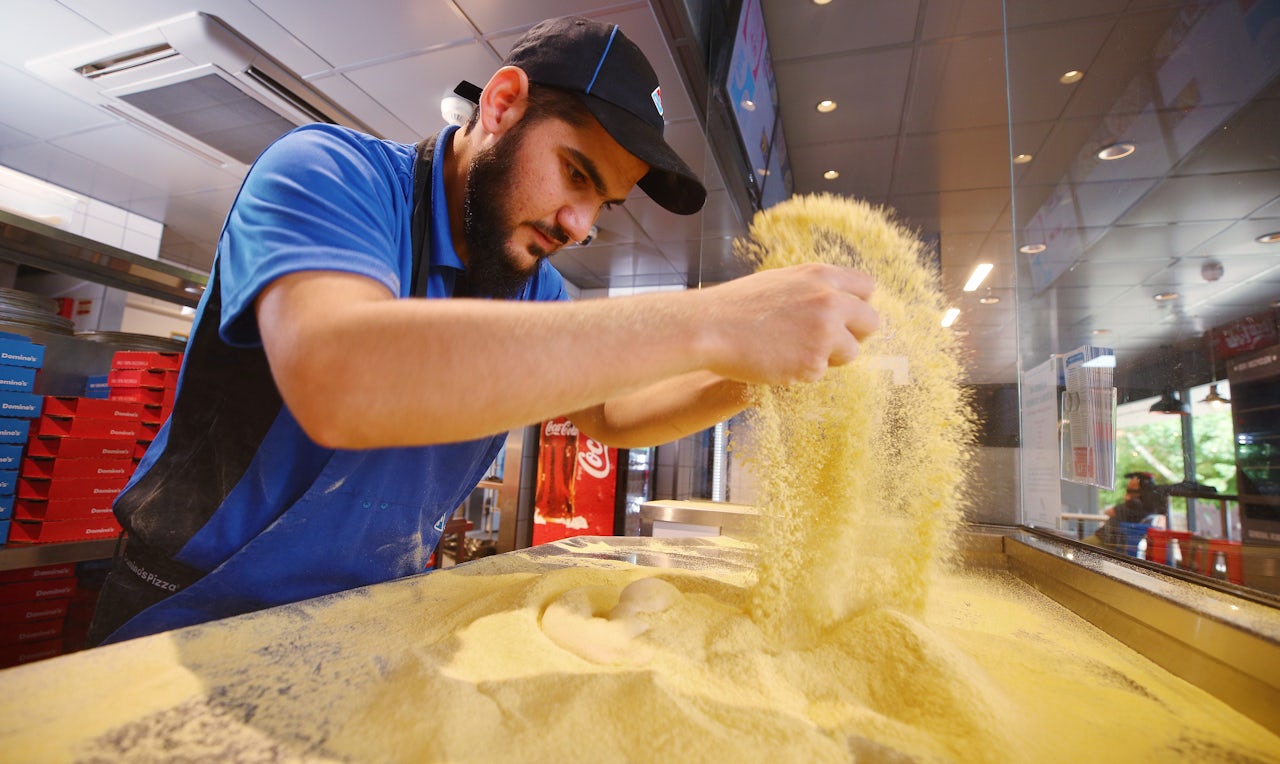Domino’s Pizza used to be a joke. Consider the 2005 Saturday Night Live sketch in which Donald Trump (portrayed by Darrell Hammond), wears a giant pizza slice around his neck as he shoots a Domino’s advertisement: “Personally, I think it’s the highest quality pizza of the low-quality pizzas.” Sure, good shitty pizza may be better than some, but the point is that it’s still shitty.
Fourteen years later, Donald Trump is the president, and Domino’s Pizza, based in Ann Arbor, Michigan, is now the biggest pizza chain in the world, with more than 16,000 franchises globally and customer satisfaction consistently nearing all-time highs. A share Domino’s stock purchased on December 31, 2009 cost about $7.50. Today, it’s worth around $294. Though Domino’s rapid rise can be chalked up to a few intuitive and obvious factors — they began spending more on ingredients and made it easier to order pizzas — it’s both characteristic of and a departure from significant, broader changes in how and where Americans started buying their food in the last decade.
As many flashy magazine profiles and news stories will tell you, the story of Domino’s resurgence began with fixing its pizza and making an app. “Domino’s Atoned For Its Crimes Against Pizza and Built a $9 Billion Empire,” declaredBloomberg Businessweek in a buzzy 2017 feature, modeled on the distinct, button- and bright color-heavy aesthetic of Domino’s phone app.
In the spring of 2009, as Bloomberg reported, Domino’s head of U.S. operations decided to see what would happen if Domino’s started making higher-quality pizzas. Deeply shamed by a viral video showing two Domino’s employees putting snot on food before sending it out for delivery (this was long enough ago that a social media “shaming” still had some novelty), the company embarked on a year-long PR effort to explain that they were making good pizza. It culminated with Stephen Colbert cutting them a favorable segment on an episode of The Colbert Report.
Beyond just making better pizza and telling people that it’s better, Domino’s made it easier for people to actually order the pizza. They had a website that worked, and they released an app before most other major food chains. The “Pizza Tracker” released in 2008, effectively simulated transparency, even if it appears the tracker does not actually track your pizza accurately. And while people might not have yet accepted that Domino’s Pizza was qualitatively “better” than before, this was still the same company that likely had a location near you, and that could deliver you a pizza in “30 minutes or less” as its commercials once claimed.
Investing money in making better food, marketing yourself in a way that isn’t excessively cringe, and making delivery as “seamless” as possible are pretty straightforward components of a successful pizza chain. But Domino’s success prefigured the biggest change in how Americans began eating in the next decade, which was increasingly, from their phones, in their sweatpants, and on their couches.
Though Domino’s would later partner with order-and-delivery services like Grubhub, for the most part it got to keep everything in-house (it operates on a franchise model). Other franchise competitors like McDonald’s would later break into delivery with partners like Uber Eats, but Domino’s and its franchises has had its own fleet of drivers for decades. This has played to Domino’s advantage: the company’s biggest competitors — Papa John’s and Pizza Hut — both now use third-party services like DoorDash, which means they make less money from their deliveries (“These players are currently pricing below the cost to serve, offering free delivery or other deep discounts that are currently enabled by investor subsidies,” Domino’s CEO told analysts earlier this year).
The online food delivery market is projected to swell by hundreds of billions of dollars in the next few years, and Domino’s is poised to capture of decent chunk of those dollars. Its prescient if basic improvements have cemented its position in the market, as has its adherence to a seemingly quaint, non-”gig economy” labor arrangement with its drivers. Although there are many buzzy tech companies with truckloads of venture capital now competing with Domino’s, as Domino’s own CEO pointed out, those same companies are eating heavy losses to do so.
Domino’s figured out that what American consumers like best is extreme convenience above all else, and unlike its competition from Silicon Valley, it can manage that convenience without having to light its investors’ money on fire. That said, the pizza really isn’t so bad.
